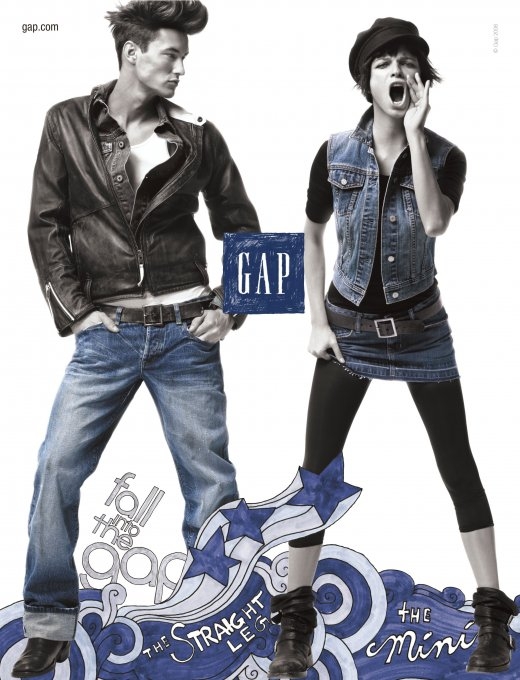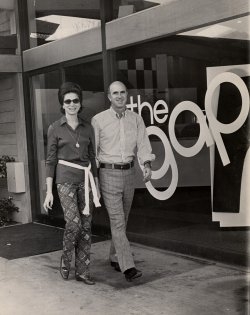
LOS ANGELES TIMES: Donald G. Fisher, who launched the Gap clothing chain 40 years ago and helped build it into one of the world’s leading apparel retailers, died Sunday. He was 81. A former real estate developer, Fisher switched to retailing at age 41 after he tried to return a pair of ill-fitting jeans at a local department store. Finding the store messy and its selection of sizes and styles limited, Fisher decided he could do better. With $63,000 in capital, the Fishers came up with a concept for a store that would feature a broad selection of Levi’s, neatly arranged by size in wall cubicles rather than stacked haphazardly on tables. The Fishers opened their first store on Ocean Avenue in San Francisco on Aug. 21, 1969. The name “The Gap” was suggested by Doris Fisher as a reference to the “generation gap”  that was widening in America during the late 1960s. (They initially considered Pants and Discs, because the first store sold records and tapes in addition to Levi’s.) MORE
that was widening in America during the late 1960s. (They initially considered Pants and Discs, because the first store sold records and tapes in addition to Levi’s.) MORE
RAVIT LICHTENBERG: In 1998 one of the most hip, inventive, happy commercials came on the air and forever changed the landscape of ad campaigns in the casual-apparel industry. The Gap’s “swing” commercial featured guys and girls in t-shirts and khakis on a bright white background- dancing, swinging, moving to the jitter-inducing “Jump, Jive and Wail.” The campaign’s crown-jewel version used “digital photogrammetry – morphing between two still photographs – to give us the effect of a freeze frame camera swing around suspended dancers.” [1] The Swing campaign was followed by other, equally inventive campaigns that cemented the Gap as an icon of clean lines and happy, wearable designs. It turned the Gap into a leader and an innovator of effective advertising and set its success as a benchmark against which other companies measure the impact of their advertising. But despite its relentless attempts to replicate its success (and ride its tailwind)–Gap, I would argue, hasn’t been able to put its finger on success’ pulse. What it thought was a winning formula–upbeat music, young and hip models, causal wear, innovative camera work–hasn’t quite delivered on expectations. Even after adopting celebrities (Madonna, Sarah Jessica Parker, Orlando Bloom) to lead its campaigns, the Gap hasn’t been able to enjoy the same levitation it once had. The Gap today is facing many challenges. Its brand image is unclear, the quality of its designs and fabrics has declined, and in 2005 it made the mistake of insufficiently differentiating its lines from those sold at Old Navy. From a place of solid market leadership, the Gap has seen its piece of the pie shrink as competitors such as Abacrombe and Fitch, American Apparel, and The Limited hoard customers’ spending power are develop a loyal customer base. MORE
